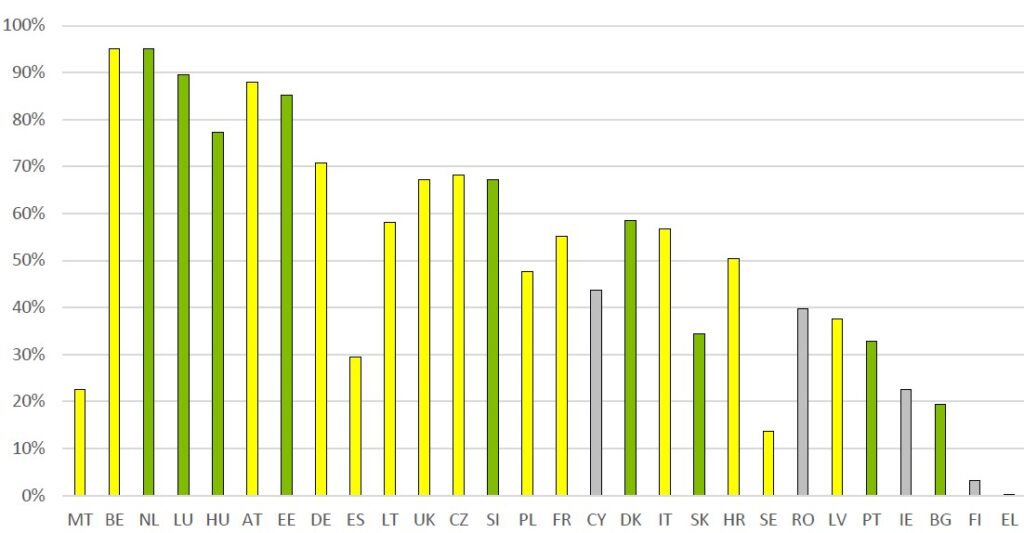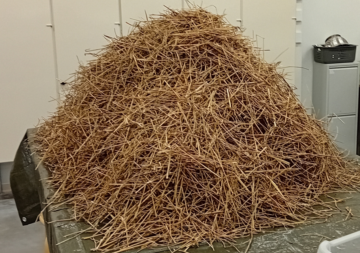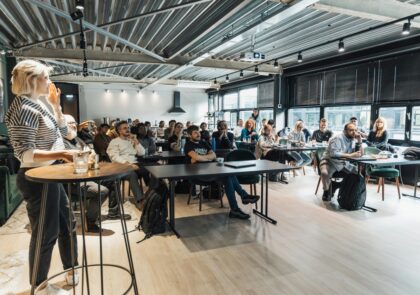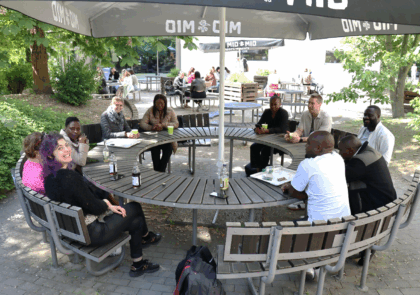
Most of the discussion and news about recycling are related to recycling plastics, as fully deserved, the construction sector and the waste it creates does not get the pub-lic attention it needs. This sector generates the most significant waste streams in the EU, and the recycling rate is behind targets.
Authors: Jan Reiners & Brett Fifield
We waste resources and opportunities
The forecast is that by the end of the century, the global population exceeds 11 billion. The growing population means an increasing amount of construction and waste, but already our planet struggles to meet our natural resources demands and absorb the waste we generate. (European Environment Agency 2016)
The amount of waste is a global problem, but things are not so well in Europe neither. In 2013, total waste generation in the EU was approximately 2.5 billion tons, of which 1.6 billion tons were not in recycled streams (European Commission 2015). The amount of unrecycled materials is high given the fact that European waste legislation dictates that firstly waste should be prevented, then reused, recycled, recovered, and finally disposed of (European Commission 2008). This means a significant loss of resource efficiency opportunities and creating more jobs (Eriksson et al. 2005).
The construction and Demolition sector should be in “observation class”
Approximately 25-30% of the EU’s waste is Construction and Demolition Waste (CDW), including materials such as concrete, bricks, wood, metals, and excavated soil. The CDW is generated, for example, from the construction and demolition of buildings, renovation, and maintenance. In 2016 the amount of CDW, excluding excavated soil, was 374 million tonnes. (European Environment Agency 2020; European Commission 2015)
The construction sector is behind the European Commission’s recycling targets. European Waste Framework Directive (2008/98/EC) dictates that “by 2020 a minimum of 70% regular CDW excluding hazardous waste should be reused, recycled, or undergo other material recovery” (European Environment Agency 2020; European Commission 2015). Currently, the CDW recovery level without backfilling varies in the EU, as the variance is between less than 10% and over 90%, as shown in Figure 1 (Deloitte 2017).

Figure 1. CDW recovery rates 2012 (Deloitte 2017)
CDW waste has a high potential for recycling and re-use. The materials have a high re-source value and could effectively be reused, but instead of recycling as materials, the materials are disposed of as mixed waste, backfilled, or are unsuitable for reuse or higher-grade recycling. (European Environment Agency 2020; European Commission 2015)
The question behind the lagging recycling is a tough one. Why are the targets not met while the legislation pushes the countries, and recycling technology is already available at a reasonable cost-level? The possible explanations for this could be the marginal pricing gap between the mixed waste fees and recycling options added with a lack of knowledge and commitment. With the current low pricing level of mixed waste, the construction companies are not attracted to increasing recycling, as the increase could mean additional costs. The knowledge is crucial in the bigger picture; without the up-to-date information about recycling and its benefits, the decision-makers prioritize pricing.
What could be done?
A circular economy is a must that the European Commission has been working on (European Commission 2008). The Circular economy is formed of many essential aspects as eco-design, reuse or refurbishment of old products, product sharing, waste preventing, and recycling (European Environment Agency 2016). A shift from waste management to recycling and finally to a circular economy is a long road where, both soft and hard, steering is needed. The soft approach is to increase awareness and knowledge in the construction sector, support incentives, implement bonus systems, and finally commit the organizations from top-to-bottom in recycling targets.
A harder approach is also needed to close the gap between the targets and the current situation. Finnish Government Communications Department (2016) reported that, based on the project “Kohdennetut keinot kierrätyksen kasvuun” (KEIKKA), stronger steering instruments are needed to increase the amount of waste directed to recycling and strengthen the market of recycled materials. The most likely steering method is to increase the taxation of mixed waste. The higher pricing of mixed waste would widen the gap compared to recycling options, thus making recycling more attractive even to most cost-oriented companies (Reiners 2020).
The point of origin recycling is the most effective way to achieve material efficiency and circular economy as the materials would be more easily usable and in higher grade when collected separately already at the construction site.
Challenges of increased recycling
The waste logistics companies operate in a relatively fluctuating business sector, as most of the events and construction sites are scheduled for warmer months of the year. To prepare for the highest possible demand and an increasing amount of containers per customer caused by the point of origin recycling, these companies could find them having heavy investments tied to non-profitable assets during the offseason (Reiners 2020). Additionally, the storage space during the offseason could be challenging to arrange.
The secondary challenge is the specifications and amount of the equipment. In construction, the waste generated changes from lightweight plastics to heavy concrete, which ideally would require a different type of collection equipment. Most logistics companies currently offer one or two types of containers to maximize their product efficiency. The construction sites’ problem is the space requirement; Dense urban construction does not allow excess space to be reserved for recycling purposes.
Product sharing and cooperation as a tool
European Environment Agency (2016) highlights in its report “Circular Economy in Europe” that focusing on offering product-service systems is one of the leading business models to be supported in the future. A rental business model where equipment suppliers offer rental containers designed for each material or containers with multiple sections to decrease the space need would most likely increase the recycling rate (Reiners 2020).
This model could benefit all; As container renting is not the core business for logistic companies, the possible rental model could improve asset management and give operational flexibility. The construction companies would benefit from the equipment supplier’s expertise and more suitable solutions. The equipment supplier’s benefit would be an additional service besides the sales and acquiring used containers to the sales portfolio.
Creating inter-organizational cooperation within the environmental and construction sector to increase recycling could be a partial solution to manage resources better, increase product effectiveness, and help the construction sector reach recycling targets and ultimately, the circular economy. Increasing recycling and finally reaching a circular economy is not just “green thinking”; it would create well-being throughout the society.
References
Deloitte. 2017. Study on Resource Efficient Use of Mixed Wastes, Improving management of construction and demolition waste – Final Report. Prepared for the European Commission. [Cited 27 Sep 2020]. Available at: https://ec.europa.eu/environment/waste/studies/pdf/CDW_Final_Report.pdf
Eriksson, O., Carlsson Reich, M., Frostell, B., Björklund, A., Assefa, G., Sundqvist, J. O., Granath, J., Baky, A. and Thyselius, L., 2005. Municipal solid waste management from a systems perspective, Journal of Cleaner Production, 13(3), 241-252.
European Commission. 2008. Directive 2008/98/EC on waste (Waste Framework Directive). [Cited 27 Sep 2020]. Available at: https://ec.europa.eu/environment/waste/framework/
European Commission. 2015. Proposal for a Directive of the European Parliament and of the council amending Directive 2008/98/EC on waste COM/2015/0595 final – 2015/0275 (COD). [Cited 27 Sep 2020]. Available at: https://eur-lex.europa.eu/resource.html?uri=cellar:c2b5929d-999e-11e5-b3b7-01aa75ed71a1.0018.02/DOC_1&format=PDF
European Environment Agency. 2016. Circular Economy in Europe – Developing the knowledge base. [Cited 27 Sep 2020]. Available at: https://www.eea.europa.eu/publications/circular-economy-in-europe/at_download/file
European Environment Agency. 2020. Practices in the construction sector key to increasing material reuse, high quality recycling. [Cited 27 Sep 2020]. Available at: https://www.eea.europa.eu/highlights/improving-circular-economy-practices-in
Government Communications Department. 2016. Report: Strong guidance needed to increase recycling [Cited 5 Nov 2020]. Available at: https://valtioneuvosto.fi/en/-/10616/kierratyksen-lisaaminen-edellyttaa-vahvaa-ohjausta?inheritRedirect=false
Reiners J. 2020. Piloting as a tool to start a new business and improve processes: Case Finncont Ltd. rental business pilot. LAB University of Applied Sciences, Faculty of Business and Hospitality Management. Lahti. [Cited 17 Nov 2020], Available at: http://www.urn.fi/URN:NBN:fi:amk-2020111923436
Authors
Jan Reiners is studying in the MBA, International Business Development program at LAB University of Applied Sciences.
Brett Fifield is a Principal Lecturer in International Business at LAB University of Applied Sciences.
Illustration: https://www.pexels.com/fi-fi/kuva/aamu-aamunkoitto-arkkitehdin-suunnitelma-arkkitehtuuri-1402923/ (Pexels licence)
Published 23.11.2020
Reference to this article
Reiners, J. & Fifield, B. 2020. Could share economy help to achieve recycling targets in construction? LAB Pro. [Cited and date of citation]. Available at: https://www.labopen.fi/en/lab-pro/could-share-economy-help-to-achieve-recycling-targets-in-construction/






